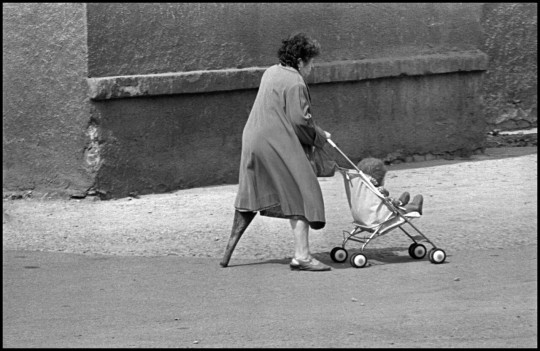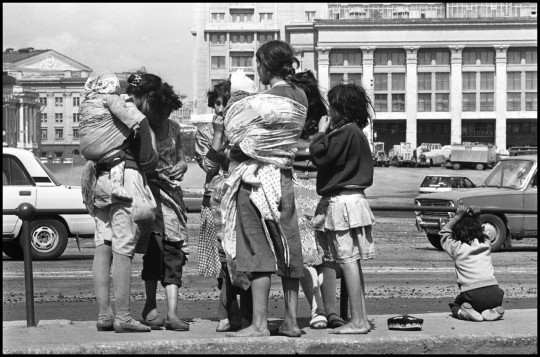#Vladimir Bogdanov
Text

Russia, Moscow, 1990s - by Vladimir Bogdanov (1937), Russian
1K notes
·
View notes
Text
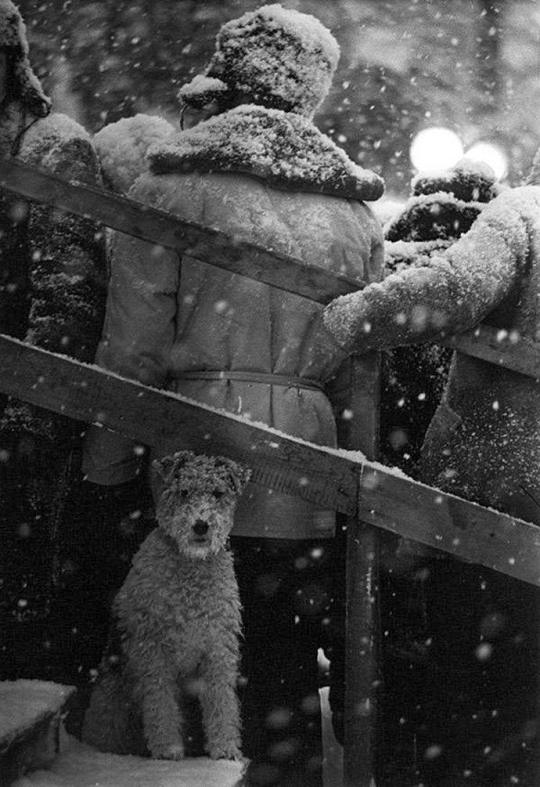
Vladimir Bogdanov
"It's not my dog business."
1965
75 notes
·
View notes
Photo
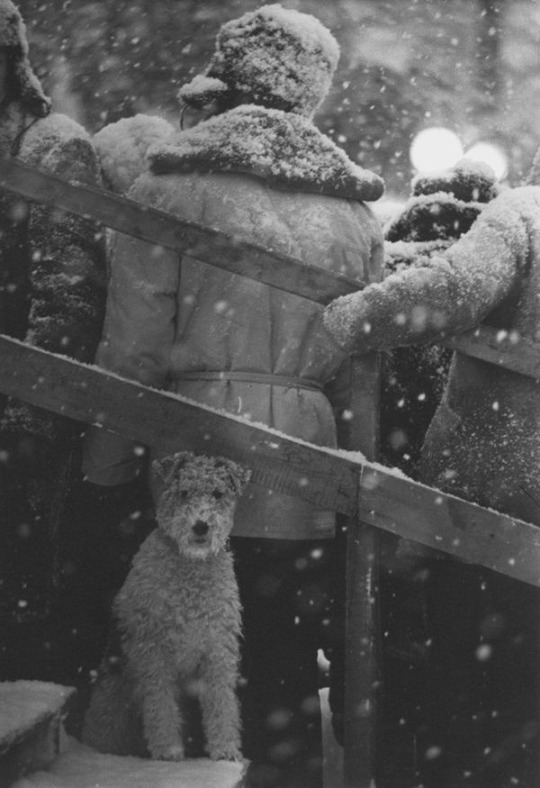
Vladimir Bogdanov, It’s not my dog business, Leninegrad/St Petersburg, Russia,1965
https://vvbogdanov.photographer.ru/sobaki?lang=eng
31 notes
·
View notes
Photo

Vladimir Bogdanov, The Summer Garden in St Petersburg and its iconic iron-cast railing, St Petersburg , Russia, 1970
5 notes
·
View notes
Text

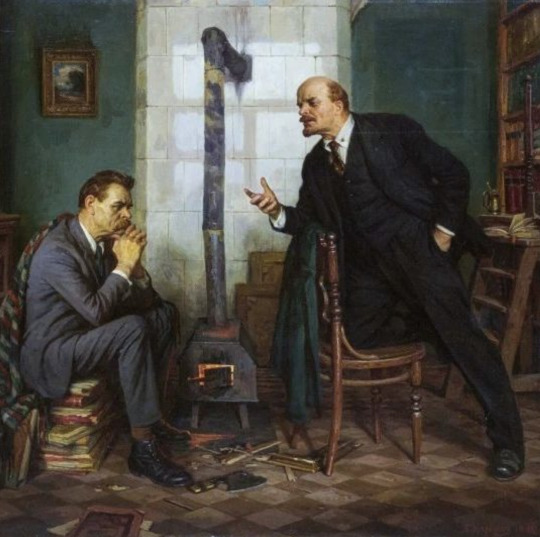
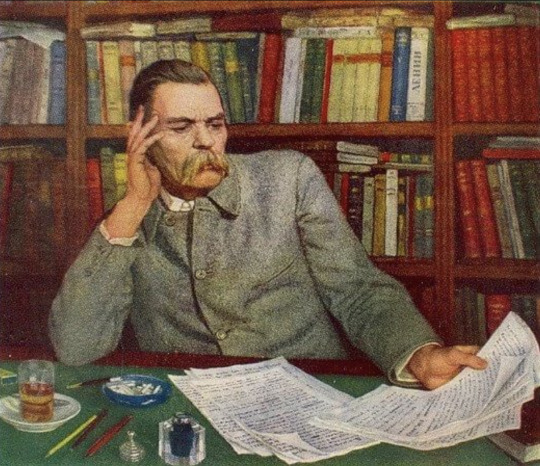
I. Resim Victor Ryzhikh tarafından çizilen "Maksim Gorki'nin Kızıl Ordu Adamlarını Ziyareti" adlı resim.
II. Resim Boris Valentinovich Scherbakov tarafından 1970 yılında çizildi.
III. Resim Nikolay Bogdanov tarafından 1940'da çizilen "Gorki'nin Portresi" adlı resim.
0 notes
Text
Jeune Afrique: Egypte - Russie / Young Africa: Egypt - Russia
Jeune Afrique: Egypte – Russie / Young Africa: Egypt – Russia
Jeune Afrique: L’Égypte et la Russie réaffirment leur proximité – Young Africa: Egypt and Russia reaffirm their closeness
Le représentant spécial au Moyen-Orient de Vladimir Poutine a échangé avec le président égyptien Abdel Fattah al-Sissi. Moscou et Le Caire désirent encore renforcer leurs relations.
Vladimir Putin’s special…

View On WordPress
#Africa#al-Sisi#al-Sissi#Cairo#Denis Manturov#Jeune Afrique#Mijaíl Bogdanov#Mikhail Bogdanov#Moscú#Vladimir Putin
0 notes
Text

At the window. Photo by Vladimir Bogdanov (USSR, 1980s).
1K notes
·
View notes
Text
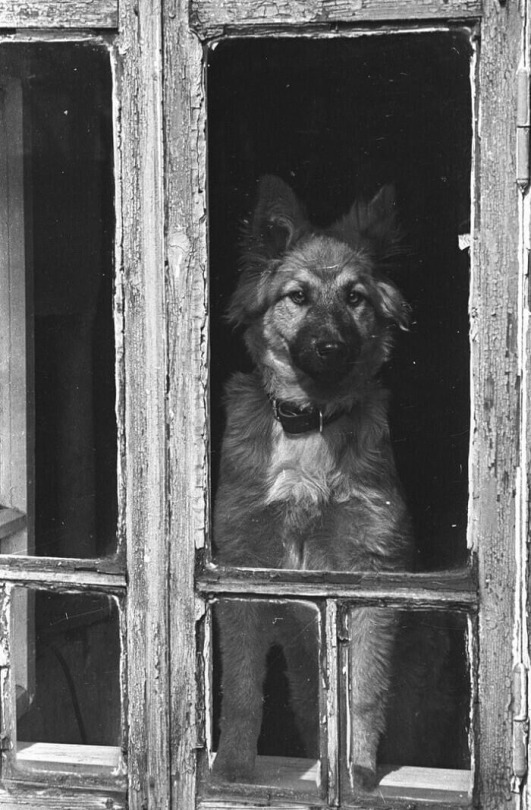
At the window, 1980s (photo by Vladimir Bogdanov)
23 notes
·
View notes
Text

Vladimir Bogdanov, Arbat 1995
20 notes
·
View notes
Text

In the goal, 1962 - by Vladimir Bogdanov (1937), Russian
90 notes
·
View notes
Text
youtube
Watch the 2024 American Climate Leadership Awards for High School Students now: https://youtu.be/5C-bb9PoRLc
The recording is now available on ecoAmerica's YouTube channel for viewers to be inspired by student climate leaders! Join Aishah-Nyeta Brown & Jerome Foster II and be inspired by student climate leaders as we recognize the High School Student finalists. Watch now to find out which student received the $25,000 grand prize and top recognition!
#ACLA24#ACLA24HighSchoolStudents#youtube#youtube video#climate leaders#climate solutions#climate action#climate and environment#climate#climate change#climate and health#climate blog#climate justice#climate news#weather and climate#environmental news#environment#environmental awareness#environment and health#environmental#environmental issues#environmental education#environmental justice#environmental protection#environmental health#high school students#high school#youth#youth of america#school
18K notes
·
View notes
Text
The Yaga journal: Baba Yaga in the lubok
Our next article in the Yaga journal (again, I skip a few which are honestly no fun or not interesting to translate) is “Baba Yaga in the luboks” by Galina Kabakova.
There has been research about Baba Yaga ever since the first publication of Russian fairytales. People kept debating the origins and symbolism of the character: is she tied to an initiation ritual, with death or birth, as Vladimir Propp said? Or is she rather a figure of the earth, or fertility? But all those questions are based on the analysis of folktales and oral fairytales. This article rather proposes to take a look at the folk-iconography of Baba Yaga, to study the way the character was drawn and illustrated to explore new roads and theories about the character - more specifically the article studies the Russian luboks of the 18th and 19th centuries.
I) Baba Yaga and her companions
When it comes to studying “popular illustrations”, two drawings keep popping up. One is “Yaga-baba goes to fight the crocodile”. The second is “Yaga Baba with a moujik, an old bald man, they jump while dancing”. Both images date from the 1760s and appear in the catalogue of Dimitri Rovinski.
The first picture appears in two different versions. The first has an inscription saying “Yaga-Baba goes to fight the crocodile, riding a pig, with a pestle in her hand. They have a bottle of wine under the bush.”

The second version has a different inscription: “Baba Yaga wooden-leg goes to fight the karkadil while riding a pig, armed with her pestle. There is wine.”.

These two pictures are fascinating because they depict a character ignored by Russian folklore: the crocodile. The book of Konstantine Bogdanov “Crocodiles in Russia” talks about the place this animal has in the Russian culture, and it insists on its “exotic” connotations. The korkodil or karkodil appears in medieval bestiaries and symbolizes either the devil, either hypocrisy (hence the expression “crocodile tears”). However these bestiaries depict the crocodile as he appears in real life, while the luboks rather paint a much more fantastical creature: it has the mane and legs of a lion, the tail of a wolf, the claws and beard of the devil.
Beyond the two versions of the Yaga with the crocodile, we also have the famous depiction of the Yaga with the Moujik:
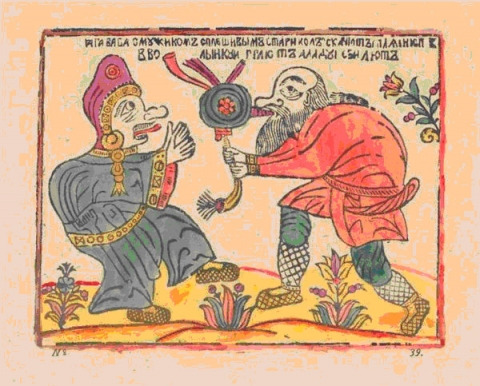
This other companion of Baba Yaga, the moujik (note: in French it is “moujik” but in English I guess it is spelled “mujik”, the same way we call “loubok” the thing English spell as “lubok”), with his bagpipe, is dressed like a true peasant, with typical Russian shoes - the lapti. His bald head implies he is old. The Baba Yaga is represented very differently from one image to the next, and two depictions can even contradict each other - but all in all, she usually doesn’t look like the way she is described in fairy tales. The famous “bone leg” does not appear. She looks like a woman, but with exaggerated traits. She has a big, large nose that is curved upward while also being hooked, and in the three pictures above we see her enormous tongue coming out of her mouth. Plus, the dancing Baba Yaga is depicted as a hunchback.
In these engravings, Baba Yaga is dressed like rich Russian women of the 16th and 17th centuries. Her outfit is similar to the letnik, with embroidered sleeves and belts. She wears an earring and a necklace, indicating again a hgher status. Her cap is the one of a married woman (or of a widow) - but she is sometimes depicted with her hair uncovered and untied (such as in the second picture), which was thought to be indecent at the time. The Baba Yaga of the images 2 and 3 wear the lapti, just like the peasant-mujik, which creates a strange incoherence in her outfit, mixing rich and poor elements. In fact, some people point out that, with her cap, she looks like she is wearing a traditional Finnish woman outfit.
Just as interesting are the attributes of the Baba Yagas. The mortar of the broom that she uses in fairytales are absent here, and she rather rides a pig or a boar. In the two first picture, she is seen holding both feminine and masculine items: the comb (feminine) and the axe (masculine). We also see the pestle she holds in her hand. In fact, the pestle used as a weapon in found in other luboks - and it is used by Baba Yaga in fairytales (for example in “Fedor Vodovitch and Ivan Vodovitch”, she hits an old man with her pestle). The pestle is also the weapon of the wicked woman in the lubok - in a book of the 18th century we find a popular image depicting an evil wife chasing her husband out of the house, holding in her hands a pitcher and a pestle.
The strange couple formed by the crocodile and Baba Yaga has other interesting attributes: the bottle of wine near the crocodile, and a little boat that appears on the water. The symbolic landscape is also formed of flowers and branches - to signify a springtime flora. These depictions have been a mystery for the universities since more than a century. If the Baba Yaga of the luboks looks so little like her fairytale self, isn’t it rather an entire other character hiding under the name of the witch?
Dimitri Rovinski was the first to theorize that these images might be a political satire of the first Russian emperor, Peter the Great, and his wife. The boat would symbolize the passion the tsar had for the marine, which led him to build a new sea-side capital (Saint Petersburg). The Finnish outfit of the woman would be a reference to the origins of his second wife, the empress Catherine the First. The wine would denounce their known love for alcohol, and the marital position of the wife would be to evoke their tumultuous relationship. Rovinski suggested that these drawings and engravings were created by “old believers” that had a strong hatred of the imperials as their sworn ennemy, and thus called the emperor names such as “cat” and “crocodile”. Other popular images could be interpreted as a satire against Peter the Great: such as the cat in “Kazan’s cat, or The funeral of the cat by the mice”.
This interpretation was repeated several times by several searchers, and is still used to this day. But it opens quite a few questions. If the crocodile is indeed Peter, what would the beast’s large beard means, since Peter was known to hate and forbid beards? On top of that, the engravings we have come from the 1760s, and we have no proof that the originals were created half a century before. Diane Farrel in “Popular prints in the cultural century of the eighteenth-century Russia”, had doubts about the political context of thos pictures. She suggested that maybe the characters were tied to a carnivalesque world. Konstantin Bogdanov also insisted on a value of “pure entertainment” for those drawings, that are part of a long tradition of comical scenes depicting drunks and brawlers. These three engravings also seem to be part of an anti-feminist theme, to not say misogynistic, depicting women (especially young wives) as always trying to humiliate and abuse their husbands - sometimes this satire was aimed more precisely at foreign women.
II) Searching for the origins of Baba Yaga
When the author of the article prepared an anthology of etiological fairytales (it was published in 2005 as “Contes et légendes de Russie”, “Folktales and legends of Russia”), they found a very short tale recorded in Eastern Russia - in the valley of Kama, a region noticeable by a high percentage of “old-faith believers”. The story goes as such: A devil decided to create Baba Yaga. He gathered the twelve most wicked old women, and he cooked them in his cauldron. He tastes the result, then made them cook a little more. He tasted a second time, and he sneezed so hard all the door flew open. He ate a spoon of the brew, and spit. From the cauldron, Baba Yaga then sprung forth.
While the text appears in the Index of fairytale-types of Western Slavic tales (under the number SUS 1169), it stays an isolated phenomenon because no other version was recorded in Russia, and it is not present in either Bielorussia or Ukraine. It was after publishing this text that the author of the article discovered a lubok page, made of eight mages, forming a sequence depicting the creation of Baba Yaga. The fairytale quoted above seems to be an abbridged version of the tale depicted by the lubok.

This lubok is quite rare, as it does not appear in the catalogue of folk-images of Dimitri Rovinski. One copy of it is kept at the Museum of religious history in Saint-Petersburgh, another at the National Library of Saint-Petersburgh, and a final at the National Library of France. It is this last copy that was reproduced above, in the monography of Catherine Claudon-Adhémar, “Imagerie populaire russe” (Russian folk-imagery), 1977. Here is the full text of the legend:
Origins and formation of Baba Yaga. The devil in chief, or leader of all devils, while being a great chemist, decided to invent an evil that would be greater than his own power. In this goal, he cooked twelve wicked women, because physics taught him that it was the best and most profitable way. After mathematic calculations, he understood that each wicked woman contains bad alcohol, compared to a regular devil, in the proportion of seven against twelve, and against his own person a seventh. By cooking the particles of the bad alcohol he set them free with the steam, but since he had nothing to contain them, he caught them with his mouth and swallowed them. At the end of the cooking, there was in the cauldron only burned matter ; he spit in the cauldron, and the alcohol mixed with the saliva of the devil fell onto the ashes, and all of this fusing together, created Baba Yaga.The devil considered her to be the ultimate evil, and he placed her in a jar, wanting to create afterward a dozen more Baba Yaga like her, and by cooking them together greating an even more perfect evil. But by weighing the evil that she contained, and comparing it to the evil present in the high-society women, he realized, disappointed, that these ladies, even without cooking, were not outweighed by her. This made him so angry that, out of dejection, he threw the jar onto the ground, and it broke in a thousand pieces, and the legs of Baba Yaga were ripped and broken. This made the devil return to his senses: understanding he was freeing the world of a great evil, he quickly gave to Baba Yaga legs of bones, he taught her wtchcraft, and so she could leave hell he gave her for a drive an old iron mortar that was laying around in his laboratory, and an iron pestle to lead the mortar - and she is still using them to this day to travel the world, doing evil wherever she goes.
This is a clearly satirical text that insists on the “scientifical” aspect of the creation of Baba Yaga, invoking mathematics, chemistry and physics. But it is clear that this lubok was clearly aiming to mock the wickedness of women. Even though for once, upper-class women are more clearly the target. This satire can have roots in a Western model: there is the famous Lustucru series in France where the smith by the same name tries to re-shape women, and he even uses an alchemical still to do so. The motif of creating life reminds the homonculus of the Middle-Ages, while Baba Yaga and the upper-class woman being weighed together reminds the religious icons such as “Saint Michael and Satan weighing the souls of the sinners.”
But there are also several motifs typical of etiological tales, such as saliva being used to create a human figure (usually the divine saliva helps build clay figurines that become the first humans). In the oral tradictions, there are tales that depict the devil as a creator: for example, sometimes he is responsible for creating the different nations. An Ukrainian tale depicts him in this role, and the story is quite similar to the one of the lubok above: the devil puts herbs and pitch in his cauldron, and cooks them. After it cooked enough, he first takes out of it an Ukrainian, then a German, then a Tatar, then a Jew - and the latter is considered by the devil as the most successful of the four. Even if this tale is supposedly etiological, we find back here the permanent trait of the devil: he is a misfortunate creator, he tries to create man but fails, or he tries to imitate the work of God but ends up creating something else entirely. And in the case of those stories, he tries to create something new that could harm much more than he does, and in the end he merely re-creates the already wicked women of the world.
The simplicity of the drawing makes the author think that the one who created this lubok did not copy a Western engraving (unlike other lubok - such as the one of a couple fighting each other to know who is going to wear the pants). The artist is quite clumsy. The devil looks like a man, but with the typical attributes of a Russian devil: a tail, horns and a goat’s beard, rooster claws, but also wings to remember his celestial origin (this last detail is not constant in the depictions of Satan). Is the great similarity in the designs of the devil, the women and Baba Yaga an intended detail? The author rather thinks it is because of the lack of talent of the engraver. It should also be noted that Baba Yaga and the upper-class women are depictedwth a great simplity: no sign of their status, no sign of vanity. The only details that form the portrait of the wicked witch are her two legs (instead of one in the folklore) of bone, and her mortar with its pestle.
Searching for the origins of the mysterious lubok led the author of the article into the world of peddling literature, which had a heavy role in adapting and re-creating folktales. This “lubok literature” existed long before the “scientific” publication of the fairytales in the 19th century. Alexandre Afanassiev used numerous books of lubok of the second half of the 18th century, because he believed they were the closest to the oral folktales. And as such, the author managed to find the text of the lubok in a fairytale called “Tale of the sir Zaolechanine, brave in service of the prince Vladimir” which is part of the “Russian tales” in 10 volumes of Vassili Levchine (published in 1780). This text, unlike the one of the lubok, mentions the term of alchemy “caput mortuum” (mummy-brown), which allows to create the worst of all creatures, Baba Yaga:
Of the origin of Baba Yaga. The devil in chief, or the devil above all other devils, who was a great chemist, cooked twelve evil women, hoping to obtain from them an essence of evil that would outdo him in wickedness. Physics had taught him that it was the best and most profitable material. According to his mathematical operatons, each wicked women contained bad alcohol in a proportion of 7 against 22 (against a regular devil) - against him, it was an 11th, and this is why he cooked twelve. But since the still hadn’t been invented, he caught with his own mouth the alcohol particles that escaped from the steam. At the end of the cooking, was only left in the cauldron “caput mortuum”. The devil spit in the cauldron, the alcohol mixed to the saliva of the devil fell on the caput mortuum and the devil saw something that was beyond all of his expectations, as Baba Yaga appeared out of the cauldron.
In the tale of Levchine, this text is under a drawn portrait hanging on the wall of an enchanted castle, and it ends with a warning: “This tale is told to you, o curious reader, from someone who is protecting your savior. But, as it is agreed that the mystery revealed against the will of a woman must be punished, for your disobediance be transformed into Baba Yaga”. And indeed, when the character tells of his discovery to others, he is turned into a dragon.
III) Baba Yaga in the lubok literature
In the lubok literature, we find back the same motifs as oral tales, but some are modified, and others added. For example the motif of cannibalism: let’s take the fairy tale type ATU 327C, “The devil brings back home a child in a bag”. In the Russian version of the tale, it is always the witch Baba Yaga who captures a child and tries to cook them in her oven. In popular versions of this tale, such as in “Hansel and Gretel” of the brothers Grimm, it is the witch or her daughter or both that end up burned into the fire by the clever child. In lubok literature, things are very different. For example, in “The tale of sir Zaolechanine”, the witch not only successfully captures a six-year old child, but she also manages to roast him and eat him. The assimilation between Baba Yaga and the dragon, who is the antagonist of the hero in the tale, is also quite different from oral tradition. In “The second tale of Ivan Tsarevitch”, from the Russian Fairytales of Piotr Timofeev (1787), the dragon-king Erakski captures Maria Morevna, and then goes to war against Baba Yaga, which allows Ivan Tsarevitch to save Maria whila the dragon is away. Usually, in fairytales, it is the job of the hero to fight and kill the wicked dragon. Simlarly, in the “Tale of Leviane the brave”, from the anonymous book “The Narrator of Russian fairytales” (1787), it isn’t the hero that is asked to keep the fabulous horses of Baba Yaga, unlike in the popular fairytale “The magical horse” (ATU 302C), it is rather Kachtchej the Immortal, another fearsome antagonist, that must take on this job.
In the “Tale of sir Zaolechanine”, we also discover some “romantic” themes invented by the author: Baba Yaga adopts the female protagonist, and she falls in love with the winged dragon, who doesn’t love her back. However she visits him every day, and sometimes goes back to her house in tears, and sometimes in “great anger that always ends up in sigh”. And to end, when Baba Yaga dies, “her petty soul leaves her miserable body and falls into hell”. But it is especially in the descriptions that we find elements absent from oral versions. For example, in “The second tale of Ivan Tsarevitch”, the witch lives in a palace protected by an iron barrier - instead of a hut on top of chicken legs. In an anonymous version of “The fire-bird and the gold-mane horse”, published in Moscow in 1860, we have a description of the witch as having the head of a pig, the tail of the crow or a tail of bones” - or she has “two horns, a dog head, a goose’s nose, a tin tail”. And other times, it is written “the awful Baba Yaga with long teeth, a bone leg, a cast-iron head and a clay tail.” It must be remembered that the folkloric character of Baba Yaga is barely described, and when she is it is another set of traits that is put forward. In folklore it is her traits tied to the world of the dead or the reptile that are brought forward: she only has one leg, and it is a leg of bones (or a bony leg, aka a very skinny one). Her nose is sometimes so long it touches the ceiling. Other times, the traits described are about an hypertrophied feminity: breasts so enormous they cannot be hold in the room and overflow out of the door. Finally, there are also a few mix-and-match details, such as a nose made of iron or a face made of clay.
To conclude this study of iconography and engraving of legends, the author says that the lubok takes the character of the fairytales, this popular character of oral tradition, not to retell its story faithfully, but to mock through it the weaknesses and flaws of women, focalizing especially on upper-class women and foreign women. Folk-imagery is thus very revealing of social, racial and gender prejudices very common at the time.
#the yaga journal#baba yaga#russian folklore#russian folktales#lubok#russian fairytales#antisemitism in fairytales#misogyny in fairytales
17 notes
·
View notes
Photo
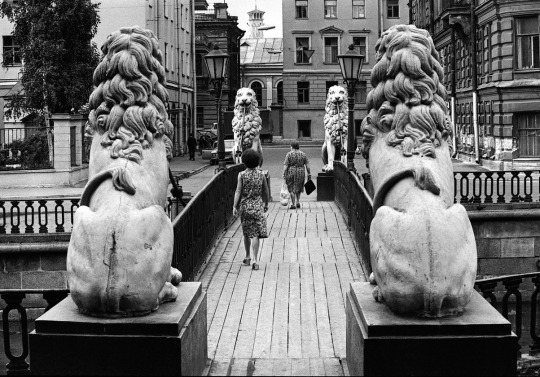
Vladimir Bogdanov, Lion’s Bridge, Leninegrad, URSS.Russia, 1972
3 notes
·
View notes
Text
youtube
Watch the American Climate Leadership Awards 2024 now: https://youtu.be/bWiW4Rp8vF0?feature=shared
The American Climate Leadership Awards 2024 broadcast recording is now available on ecoAmerica's YouTube channel for viewers to be inspired by active climate leaders. Watch to find out which finalist received the $50,000 grand prize! Hosted by Vanessa Hauc and featuring Bill McKibben and Katharine Hayhoe!
#ACLA24#ACLA24Leaders#youtube#youtube video#climate leaders#climate solutions#climate action#climate and environment#climate#climate change#climate and health#climate blog#climate justice#climate news#weather and climate#environmental news#environment#environmental awareness#environment and health#environmental#environmental issues#environmental justice#environment protection#environmental health#Youtube
17K notes
·
View notes



